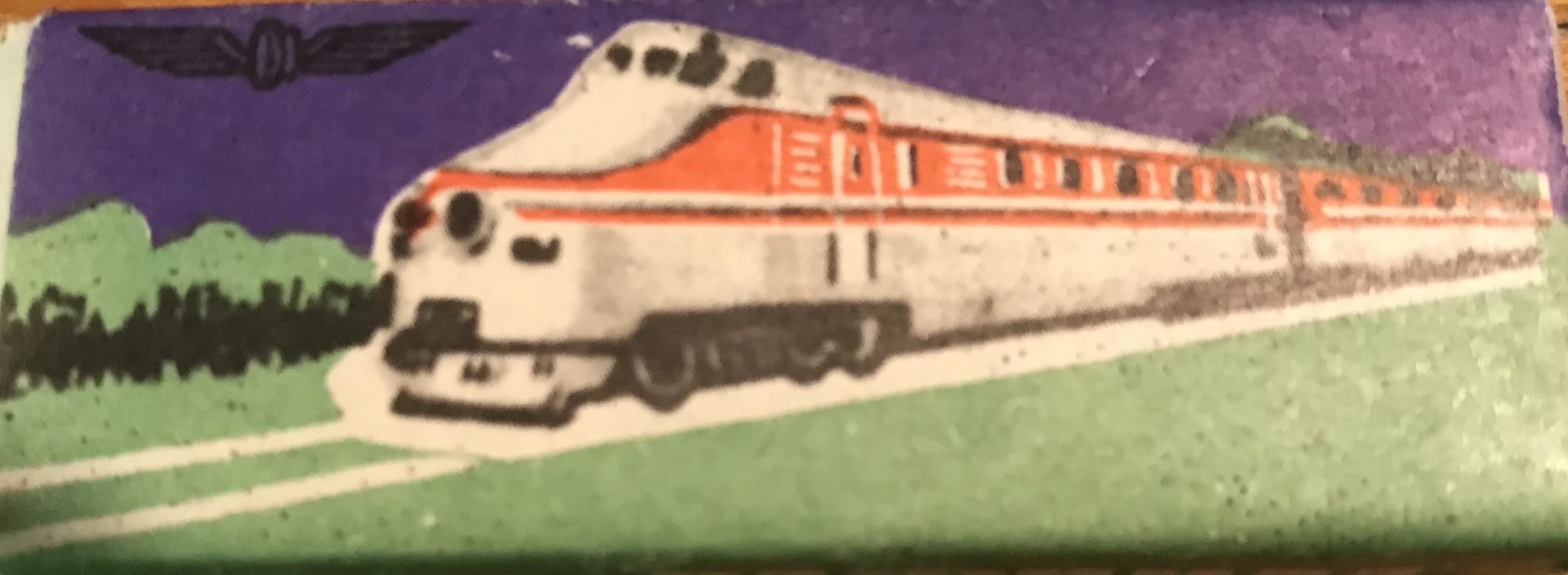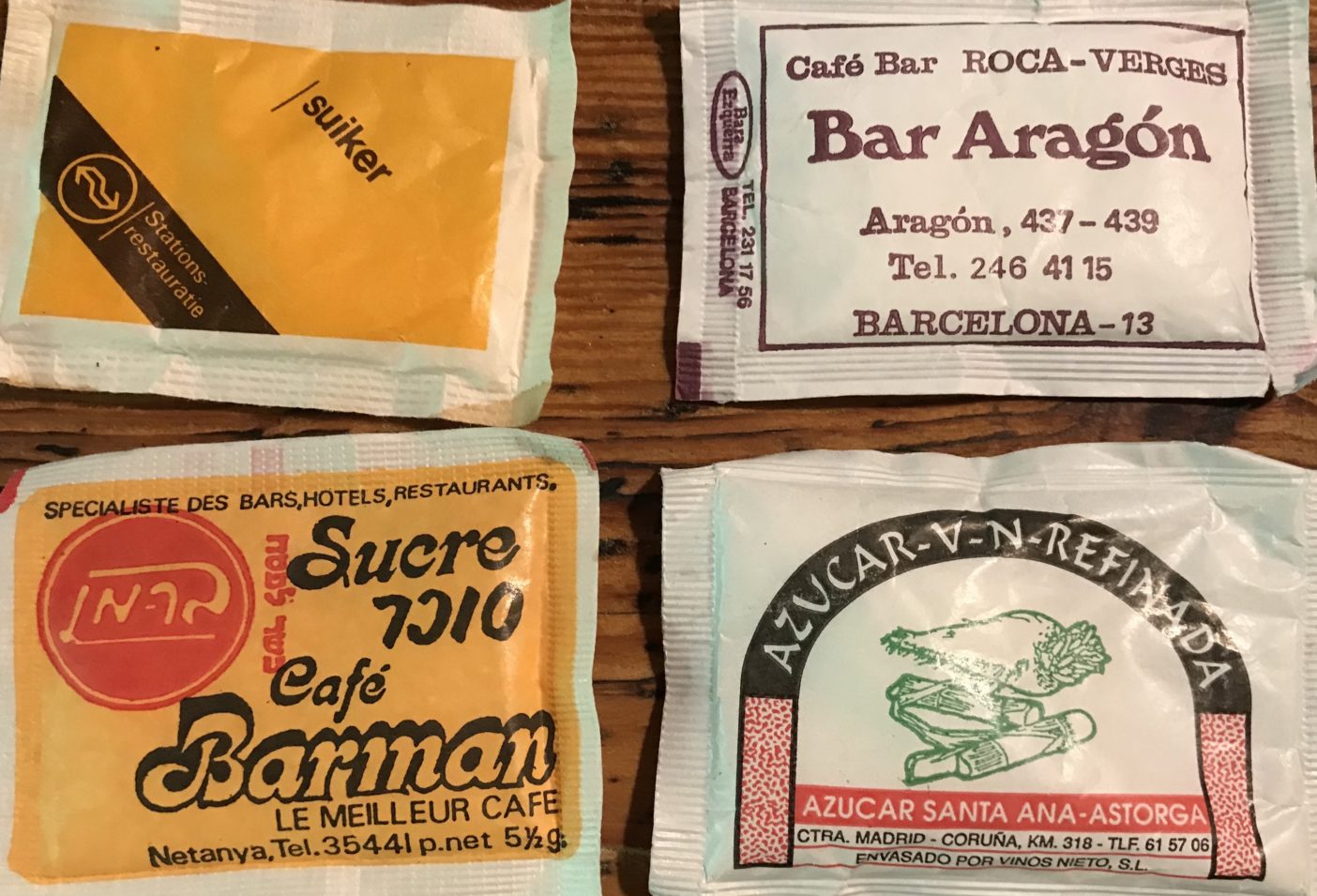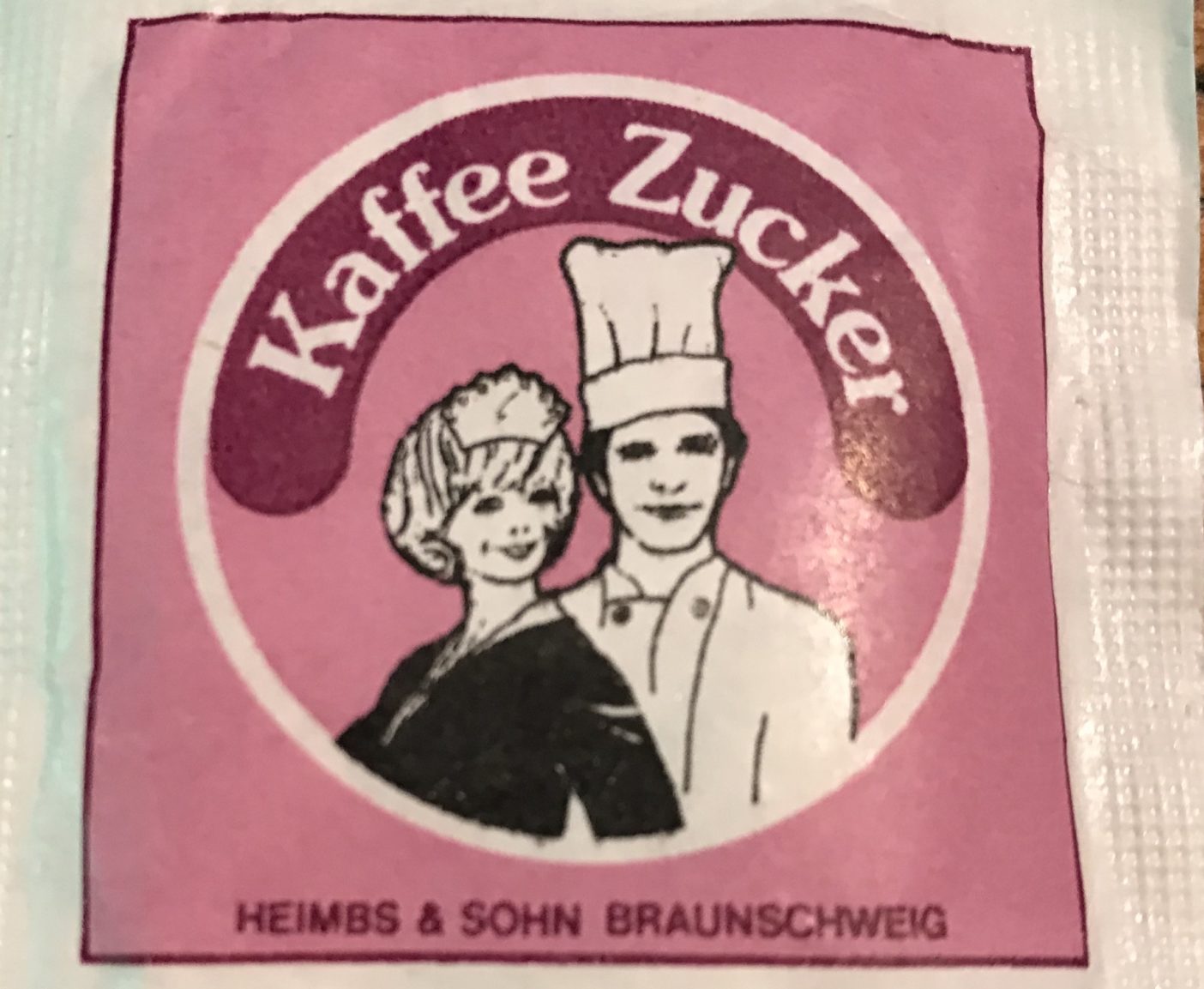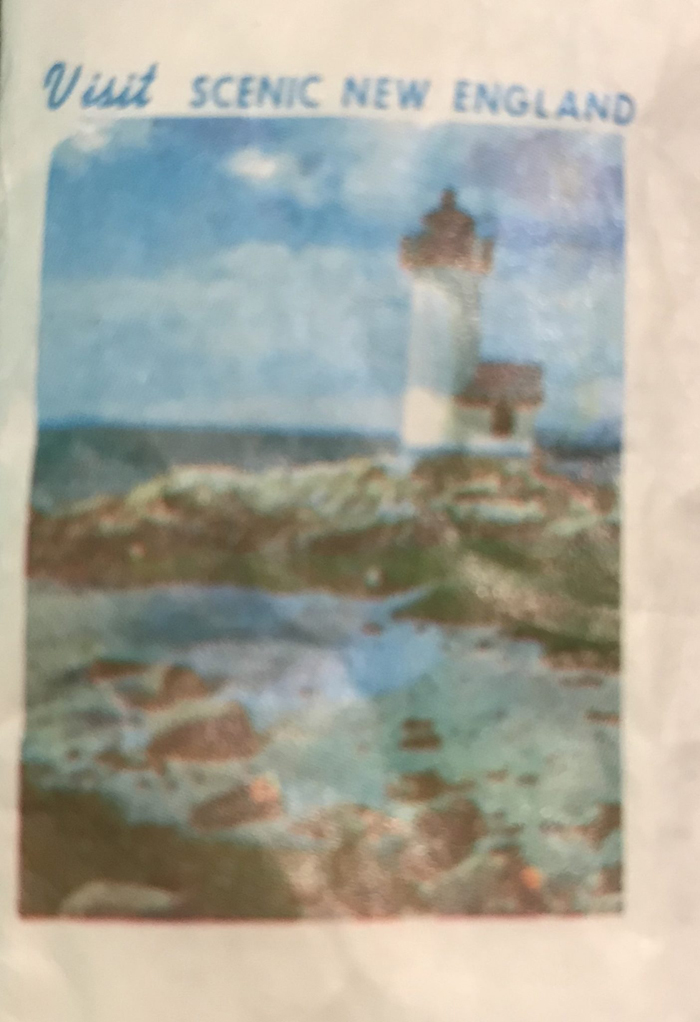Il viaggio più dolce: un giro del mondo per bustine di zucchero
Collezionare bustine di zucchero per evocare le emozioni dei luoghi visitati ed esplorati negli anni. Anche questo è viaggiare.

Collezionare bustine di zucchero per evocare le emozioni dei luoghi visitati ed esplorati negli anni. Anche questo è viaggiare.

(English translation below)
Mi sono imbattuto per caso in una collezione particolare: bustine di zucchero da tutto il mondo. Solo una grande viaggiatrice – la proprietaria è un’anziana signora – poteva per anni raccogliere l’indispensabile dolcificante, uno di quegli ingredienti trans-culturali che mette tutti d’accordo, seppure ormai poco corretto per la propria sostenibilità dietetica. Caffè, stazioni di servizio, compagnie aree, perfino treni, e poi alberghi, grandi magazzini: questi i fornitori delle bustine, non consumate, non aperte e così conservate. Una serie di piccoli furti, forse, ma non direi, perché la bustina di zucchero è anche un veicolo pubblicitario, uno strumento propagandistico minimo in omaggio per il cliente.
È un mondo colorato, oltre che dolce, multilinguistico – dal persiano all’ebraico, e poi italiano, portoghese, inglese, e via dicendo – che cerca di sedurre con una molteplicità di stili – essenziale, folkloristico, modernista, centrato su una sola immagine, ricco di testo. Sorprende quante cose diverse si possano raffigurare su un piccolo contenitore di polverina bianca od ocra, perché anche la varietà di canna è ben presente.
La collezionista ha un modo sbrigativo ma anche divertente di raccogliere le sue prede: le bustine sono aggiunte mano a mano, di ritorno da un viaggio, in una grande ciotola, alla rinfusa. Si pesca e si vede cosa viene fuori. Da Madrid abbiamo la rappresentazione di una barbabietola da zucchero e la specificazione che l’azucar è refinada.

Si cambia drasticamente stile da a La Coruna, e anziché nel vegetale ci s’imbatte in un pianoforte a gran coda, promotore di un “Piano Pub Suing” (sic). Altri vanno sull’utile, e la bustina è trasformata in cartina geografica per orientarsi. Le compagnie ferroviarie olandesi sono minimaliste, ma colorate, mentre la gloriosa catena alberghiera italiana Jolly Hotels, ormai scomparsa, riappare dal passato con il suo logo con la “J” che si fa braccio dell’ospitalità col cappello in mano. In Giappone non sappiamo di cosa scrivano, ma sfoggiano un velocissimo treno nel paesaggio verde. Altri vanno per animali – cani, cigni, orsi.

Negli Stati Uniti, New England, la bustina è la reincarnazione della cartolina postale, con la vista sul mare, le scogliere, il faro. Più semplice un caffè parigino: l’iconica insegna delle strade della capitale francese, con la via e il quartiere del locale. Tendono più al personale in Germania, con il ritratto del cuoco e della cameriera, sorridenti, giovani e su sfondo rosa.


In Egitto, invece, svettano riproduzioni di minareti mammalucchi.
Parente povera dei francobolli, la bustina da zucchero non ha il mercato filatelico, le aste, i contenitori dedicati. Ma dispone di comunità virtuali, o di occasioni di scambio.
Per la nostra collezionista, una bustina di zucchero è la memoria di un viaggio, e la sua varietà appartiene a pieno titolo all’iconografia dei ricordini e della cultura popolare – o commerciale – del mondo. Arti minori del viaggiatore.
Una collezione così ha anche il merito di raccogliere un oggettino da nulla che probabilmente è anche in via di estinzione, sostituita dalle più pratiche zuccheriere. Avremo qualcosa in meno da portarci via, ma una dose in meno di poesia spicciola, quel tipo di poesia nascosto nelle piccole cose quotidiane. Chi vuole può comunque far creare confezioni personalizzate, anche velocemente in rete su siti commerciali.
Quantità minima: 1.000 bustine – troppe anche per farne delle economiche bomboniere per affollate nozze. Ma con un consumo familiare di tre bustine al giorno, in un anno un primo lotto finisce. Potrebbe essere il vezzo di qualcuno, di avere la sua confezione dedicata. Anche se poi finisce come con la mia collezionista: lo zucchero resta dentro, perché la bustina è carina da guardare, da manipolare con il suo gonfiore, e non per zuccherare. È quel che accade a casa sua: si offre il tè o il caffè, e si propone di scegliere una bustina da aprire. L’ospite comincia allora il viaggio sfogliando i luoghi e i locali evocati dalle varie immagini, e in questo esercizio di stile geografico/commerciale, alla fine non se la sente di aprirne una bella, e sacrifica la più brutta. Una modalità di selezione naturale.
ENGLISH VERSION
I came across a particular collection by chance: sugar sachets from all over the world. Only a great traveler – the owner is an elderly lady – could collect for years the indispensable sweetener, one of those trans-cultural ingredients that everyone agrees on, albeit now not so much correct for their dietary sustainability. Cafes, petrol stations, airlines, even trains, and then hotels, department stores: these are among the suppliers of the sachets – not consumed, not opened, and thus preserved. The collection is the result of a series of petty thefts, but I wouldn’t say so, because the sugar bag is mainly an advertising vehicle, a minimal propaganda tool as a gift for the customer.
It is a colorful, as well as sweet, multilingual world – from Persian to Hebrew, and then Italian, Portuguese, English, and so on – that seeks to seduce with a multiplicity of styles – essential, folkloric, modernist, centered on a single image, rich in text. It is surprising how many different things can be represented on a small bag of powder, white or ocher (the variety of cane is also very present).
The collector has a hasty but also fun way of collecting her prey: returning home from a trip, the bags are put all together in a large bowl. One has to fish out of it and see what it comes out. From Madrid, we have the representation of a sugar beet and the specification that azucar is refinada. We drastically change the style from a La Coruna, and instead of the vegetable one, we come across a grand piano, promoter of a “Piano Pub Suing” (sic). Others go for practical information, and the sachet is transformed into a geographical map for orientation. The Dutch railway company is minimalist but colorful, while the glorious Italian hotel chain Jolly Hotels, which has now disappeared, reappears from the past with its logo with the “J” that becomes the arm of hospitality with a hat in hand. In Japan, we don’t know what they write about, but they display a very fast train across a green landscape. Others go for animals – dogs, swans, bears. In the United States, New England, the bag appears as the reincarnation of a postcard, with the view of the sea, the cliffs, the lighthouse.
A Parisian café is simpler: the iconic sign of the streets of the French capital. In Germany tend to be friendly, with the portrait of a cook and a waitress, smiling, young, and on a pink background. In Egypt, on the other hand, reproductions of Mamluk minarets stand out.
A poor relative of postage stamps, the sugar sachet does not have a philatelic market, auctions, or dedicated containers. But it has virtual communities, or exchange opportunities.
For our collector, a sachet of sugar is the memory of a journey, and its variety fully belongs to the iconography of souvenirs and popular – or commercial – culture in the world. A minor art of travelers.
Such a collection also has the merit of saving a small object that is probably also in danger of extinction, increasingly replaced by the more practical sugar bowls. If sugar bags will disappear, we will have something less to take away, and also less poetry, that kind of poetry hidden in the very little everyday things. However, anyone who wants can still have customized packages created, even quickly online on commercial websites.
This is what happens at her house: she offers tea or coffee, and to chooses a bag to open. The guest then begins the journey through places, names, and premises evoked by the various images. In this exercise of geographical/commercial style, eventually, he or she doesn’t feel like opening a “beautiful one”, and sacrifices the less nice bag. The other will survive. It is a sort of “natural selection”.
